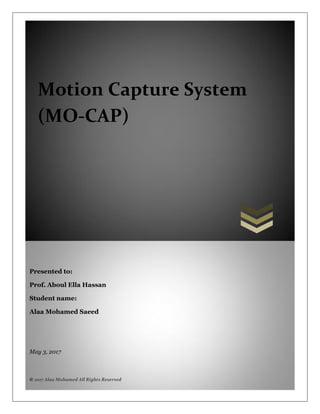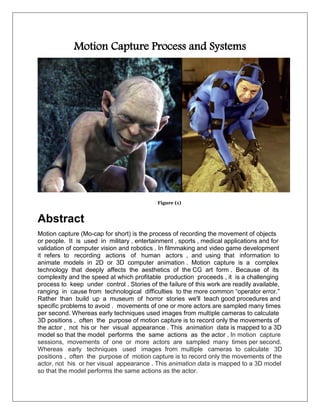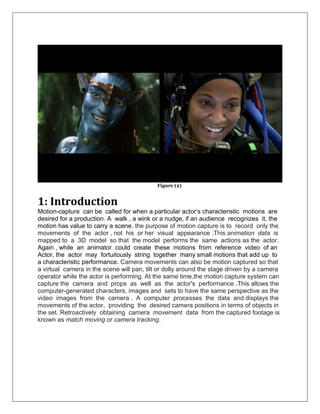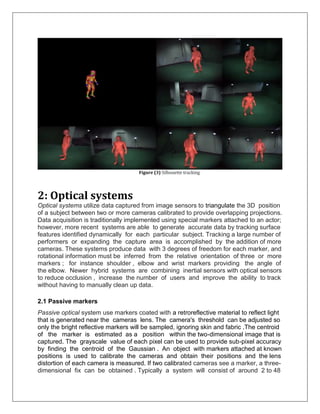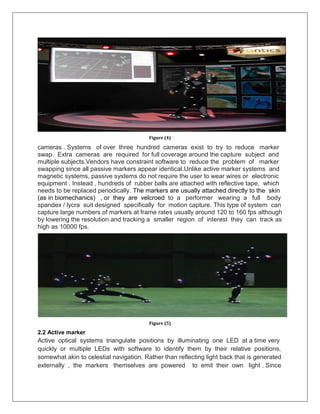The document discusses different types of motion capture systems including optical, non-optical, and facial motion capture systems. Optical systems use cameras and markers to calculate 3D positions. Non-optical systems include inertial systems using sensors, mechanical systems using exoskeletons, and magnetic systems tracking magnetic fields. Facial motion capture aims to record complex facial movements. Motion capture technology is used in entertainment, sports, medical applications, and robotics research.
